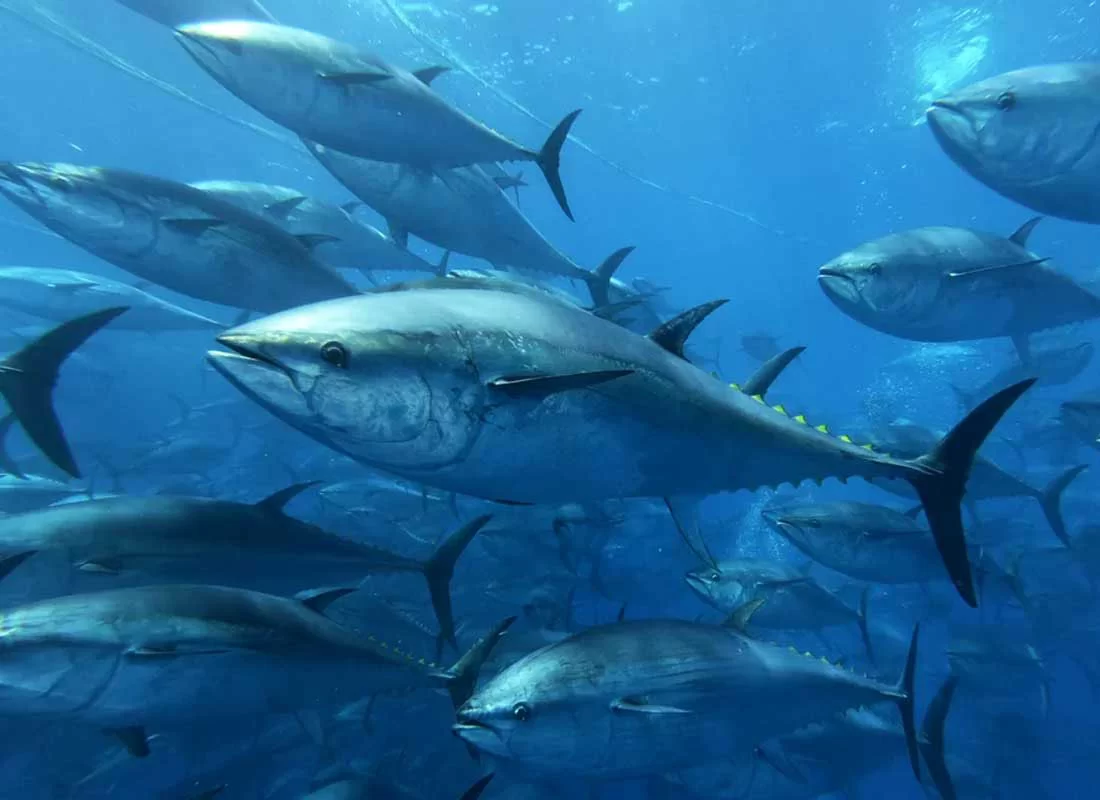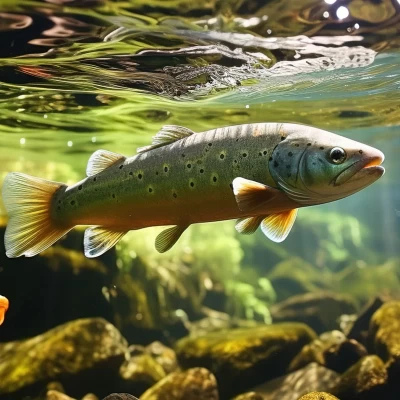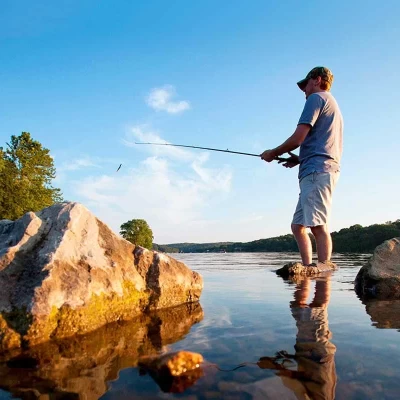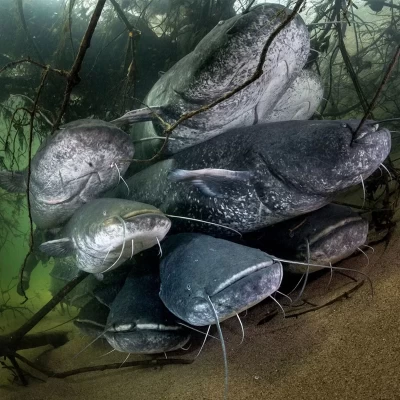Does your idea of the ultimate recreational fishing experience conjure images of battling powerful fish in the turquoise waters of the Mediterranean or Black Sea? If so, you’re likely thinking of deep sea fishing in Türkiye, a beloved way to target a variety of impressive species.
Deep sea fishing in Türkiye means venturing out into open waters, often far enough from shore that you lose sight of land. The action happens in waters at least 100 meters (approximately 350 feet) deep, targeting the larger fish that inhabit offshore areas. Think Tuna, Swordfish, and various types of Grouper. While these species offer an adrenaline-pumping challenge, remember that fishing requires patience and skill. As seasoned captains often say, “It’s fishing, not catching!” Fortunately, a deep sea fishing trip in Türkiye provides excitement, learning, and unforgettable moments, regardless of your catch. Numerous charters are available to help beginners get started.
Below, we’ll explore the specifics of deep sea fishing in Türkiye, including popular target species, prime locations, and essential preparations. Hopefully, you’ll feel ready to embark on your own fishing adventure!
What is Deep Sea Fishing?
For novice saltwater anglers, defining deep sea fishing can be confusing. In Türkiye, it’s often associated with “big game fishing” or “offshore fishing.” While the terms are sometimes used interchangeably, there are subtle differences.
The key distinction lies in the depth of the water. “Offshore” refers to the distance from land, while “deep sea” emphasizes the depth of the water. Deep sea fishing typically occurs in open blue waters, with no visible shoreline, at a minimum depth of 100 meters (350 feet). These areas often feature underwater structures like reefs and shipwrecks that attract large fish.
This distinction matters because it affects travel time and the fish you’ll target.
Where to Go Deep Sea Fishing in Türkiye
The distance required to reach waters deeper than 30 meters can vary depending on the location in Türkiye.
- Mediterranean Coast (e.g., Mersin, Antalya, Kaş, Fethiye): In certain spots along the Mediterranean coast, the seafloor drops relatively quickly, allowing access to deep sea fishing grounds within a shorter distance from the shore.
- Aegean Coast (e.g., Bodrum, Marmaris, Kuşadası): Similar to the Mediterranean, some areas of the Aegean coast offer relatively quick access to deeper waters.
- Black Sea Coast (e.g., Trabzon, Rize, Artvin): The Black Sea can also provide access to deep sea fishing, although the species targeted may differ slightly from the Mediterranean and Aegean.
The topography of the seafloor also influences the types of fish you’ll encounter. Some locations are known for big game species, while others are rich in reefs and wrecks that attract various bottom-dwelling fish.
Popular Fish Species to Target
Deep sea fishing in Türkiye offers the chance to catch a variety of exciting species:
- Tuna: Bluefin Tuna are highly prized game fish, known for their size and fighting ability.
- Swordfish: Another iconic big game species, offering a thrilling challenge for experienced anglers.
- Grouper (Lahoz, Züber): Several species of Grouper are found in Turkish waters, providing both a good fight and delicious table fare.
- Amberjack (Akya): A strong and aggressive fish that inhabits reefs and wrecks.
- Bonito (Palamut): A smaller member of the tuna family, providing fast-paced action.
- Mahi-Mahi (Lambuka): A colorful and acrobatic fish that is popular among anglers.
- Sea Bream and Porgies, Dentex (Çupra, Trança, Sinarit): Offer a fun experience, coupled with a delicious meal.
Many of these species are migratory, meaning their availability varies depending on the season. Local fishing charters can provide valuable insights into the best times to target specific fish.
Common Deep Sea Fishing Techniques
- Trolling (Sürükleme): Trolling is widely used to target big game species like Tuna and Swordfish. This involves dragging lures or bait behind a moving boat. Multiple rods are often used to cover a wider area and different depths. Outriggers and downriggers help to spread the lines and target specific depths.
- Bottom Fishing (Dip Balıkçılığı): To target fish around reefs and wrecks, bottom fishing is the preferred method. This involves dropping bait or lures to the seafloor, either while anchored or drifting.
- Deep Dropping (Derin Su Bırakma): In deeper waters, deep dropping is used to target species like Swordfish and certain types of Grouper. This requires specialized equipment, including electric reels and heavy lines.
How to Prepare for Your Trip
- Clothing: Dress in layers, as the weather at sea can change quickly. A hat, sunglasses, and sunscreen are essential. Wear shoes with good traction to prevent slipping.
- Weather Check: Always check the forecast before heading out.
- Hydration and Snacks: Bring plenty of water and snacks, as deep sea fishing can be physically demanding.
- Seasickness Medication: If you’re prone to seasickness, take medication before the trip.
- Sun Protection: Wear high SPF sunblock to prevent sunburn.
Deep Sea Fishing vs. Offshore Fishing vs. Inshore Fishing
Although “deep sea fishing” and “offshore fishing” are frequently used as synonyms, recognizing their distinct meanings can help clarify the fishing experience you can anticipate. The term “offshore” pertains to how far you are from the land, while “deep sea” focuses on the water’s depth. Deep sea fishing usually takes place in expansive blue waters, well beyond the sight of land, and at depths of around 100 meters (350 feet) or more. Engaging in deep sea fishing often necessitates traveling considerable distances offshore, which can result in longer boat rides.
Key Differences Explained
- Location: Inshore fishing is conducted in shallower waters that are close to the coast. In contrast, offshore fishing involves going out into deeper ocean waters that are several miles away from land. Specifically, deep sea or offshore fishing refers to activities occurring in the open sea, typically 20-30 miles from the shore.
- Targeted Fish Species: Inshore fishing allows anglers to catch a wide variety of fish species. Offshore fishing, however, focuses on larger and more powerful species like tuna, marlin, and mahi-mahi. Deep sea fishing aims to capture substantial game fish that dwell far below the surface.
- Fishing Techniques and Gear: Inshore fishing generally employs lighter tackle and methods such as casting with lures or using live bait. Offshore fishing demands heavier tackle and specialized techniques like trolling and deep-sea bottom fishing. Additionally, deep sea fishing often requires larger boats equipped with advanced navigation systems and gear designed to withstand challenging conditions.
- Skill Level Required: Inshore fishing is typically more suitable for beginners due to its accessibility. Conversely, offshore fishing demands a higher level of experience and familiarity with deep-sea techniques and safety protocols.
- Experiential Benefits: Inshore fishing is often more accessible and budget-friendly while providing consistent action with various fish species. Offshore fishing offers an exhilarating adventure focused on landing trophy-sized fish and allows anglers to escape the hustle of crowded coastal areas.
- Cost Considerations: Generally speaking, inshore fishing is more economical since it does not require specialized equipment or extensive travel. On the other hand, offshore fishing can be pricier due to expenses related to boat rentals, fuel, and the need for heavy-duty tackle.
Deep Sea Fishing in Türkiye: An Unforgettable Adventure
Whether you’re a seasoned angler or a complete beginner, deep sea fishing in Türkiye offers a thrilling experience. The chance to battle powerful fish in stunning waters is an unforgettable adventure. Check out the available charters near you and prepare for the fishing trip of a lifetime.
Frequently Asked Questions
What is the best time of year for deep sea fishing in Türkiye?
The best time for deep sea fishing in Türkiye typically spans from late spring to early autumn, specifically between May and October. During this period, the waters are warmer, and many migratory fish species, such as tuna and swordfish, are more abundant. However, specific peak seasons may vary by species, so it’s advisable to check with local fishing charters for the most accurate information.
Do I need a fishing license to go deep sea fishing in Türkiye?
Yes, a fishing license is required for both residents and tourists who wish to fish in Turkish waters. You can obtain a fishing license through local authorities or fishing charters. Many charter companies will assist you with the licensing process, ensuring you comply with local regulations.
What should I bring on a deep sea fishing trip?
When preparing for a deep sea fishing trip in Türkiye, consider bringing the following items:
- Sunscreen and sunglasses for sun protection
- A hat or cap to shield your face from the sun
- Comfortable clothing and shoes with good grip
- Personal snacks and plenty of water for hydration
- Seasickness medication if you’re prone to motion sickness
Are there age restrictions for participants in deep sea fishing charters?
Most deep sea fishing charters in Türkiye welcome anglers of all ages. However, it’s advisable to check with the specific charter company regarding age restrictions or recommendations for children. Many operators provide family-friendly experiences and may offer specialized equipment for younger anglers to ensure their safety and enjoyment.








